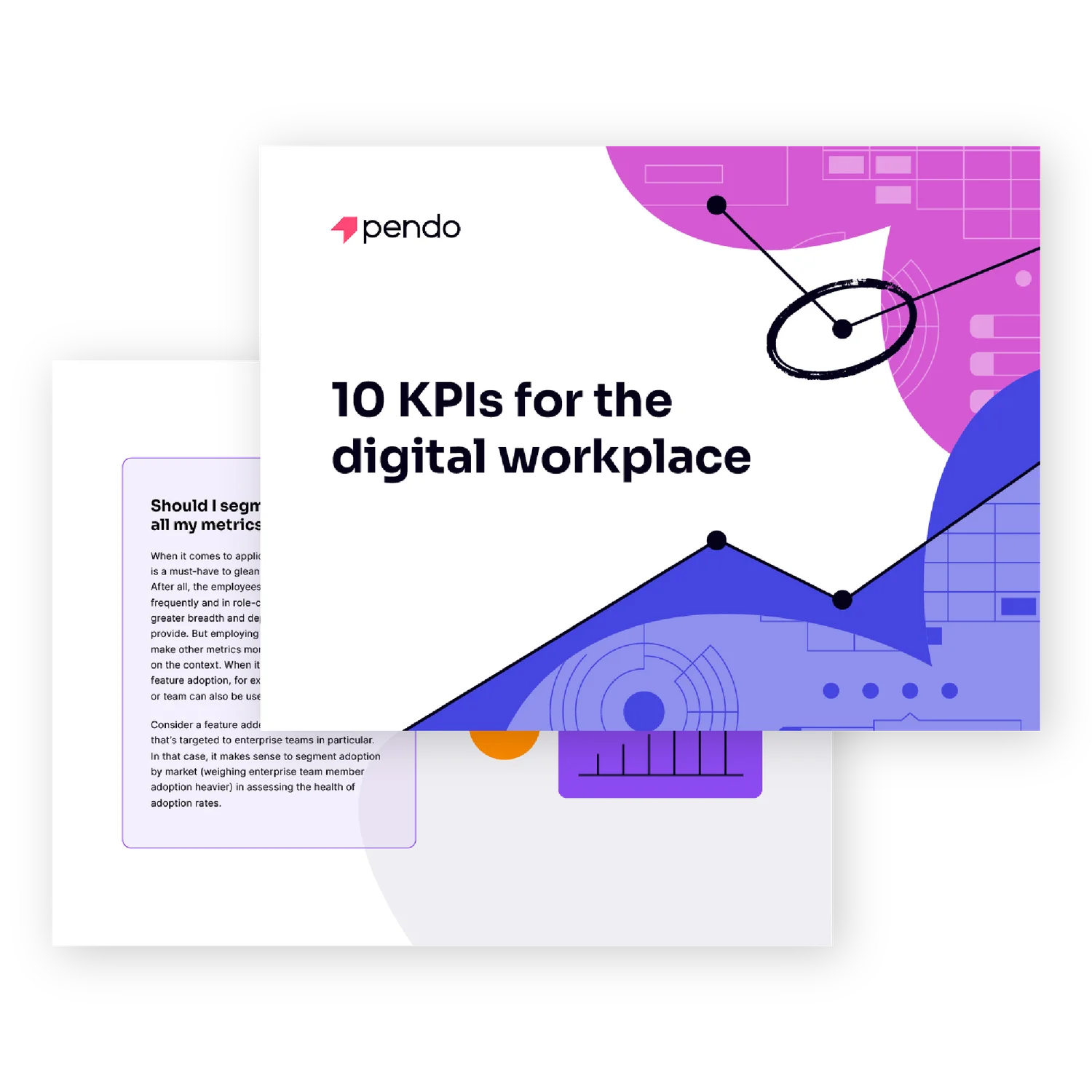
Inhaltsverzeichnis
In a rush? Download the PDF for later
Download the E-BookIn today’s business press, we hear a lot about the rise of the digital workplace, particularly since the pandemic. What’s often implied but not always explicitly stated is that the digital workplace has become synonymous with the workplace itself. This has huge implications, not only for how employees collaborate and execute on work, but also for how company leaders think about workplace tech in the context of their greater strategic and business goals. It’s no surprise that 74% of IT heads say the CIO role was elevated due to the pandemic.
It’s more important than ever for companies to invest in digital transformation and bring together IT and business operation objectives. According to a recent McKinsey survey, 73% of top performing companies now say that their CIOs and senior IT leaders are heavily involved in shaping company strategy. With that shaping and planning comes the need to measure and build accountability around shared KPIs. But which are the most important ones for an optimized digital workplace?
Right now, many companies are working to strengthen the digital workplace in three key ways: with initiatives to increase productivity, improve experiences, and optimize software—both the third party internal-facing apps you buy and the homegrown ones you build.
The problem? Too many companies are executing on these initiatives in silos. This is unfortunate, because a mature, effective digital workplace sits at the intersection of these three pillars. But how should teams best measure progress within and across these core areas? And how does improvement in each of these areas make for an improved digital workplace? Here are ten KPIs every business technology and operations team should track for the digital workplace, plus tips for taking action on the data to optimize IT initiatives and improve the employee experience.
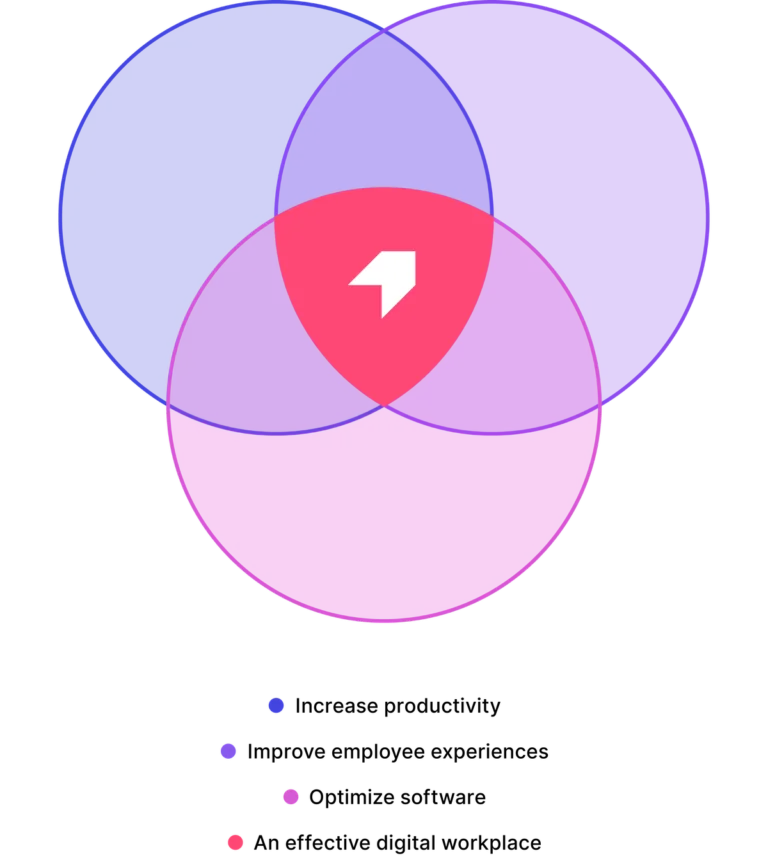
KPIs to measure and increase productivity
1. Workflow-Produktivität
In order to boost productivity, organizations have to decide how best to measure it and arrive at a baseline off of which to set future goals. Workflow productivity is the amount of time it takes for employees to complete business-critical workflows. What constitutes a business-critical workflow varies by context—it can be either a one-time or infrequent workflow (e.g. security trainings, performance reviews) or a recurring workflow (e.g. processing loan applications). The operations team’s focus should generally be on improving the latter because of their frequency and impact on things like revenue attainment and customer satisfaction. What’s more, the average time to complete a workflow is not only a measure of productivity, but a baseline of the effectiveness of that process as designed. Is a process slowing down your users? Is it adversely impacting the customer experience because it directly slows the speed of service delivery? These are the types of questions you may encounter when investigating workflow productivity.
How to take action on workflow productivity
- Once you have a workflow productivity baseline, leverage analytics from a digital adoption solution to see the flow of work across apps and across time. It may be that for certain workflows, employees are taking longer to finish because they’re getting stuck at a given point or encountering friction in some way that could be solved with better support. If there’s a particular form field that employees are confused about, for example, consider deploying an in-app notification to give them context and guidance on what the field is for and how to complete it in the desired way.
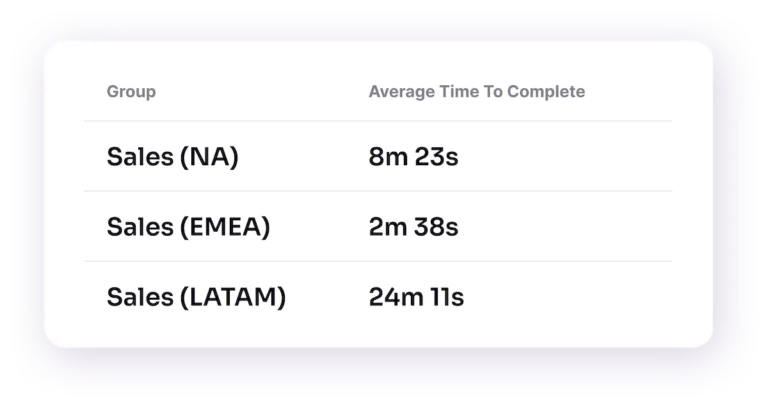
2. Prozessakzeptanz
Process adoption is an activation metric that measures how many users are completing business-critical workflows. Most key work happens not just within a single application, but across multiple apps, so it’s important for operations teams to get a sense of how teams move through various platforms to get work done—and whether users are completing processes in the intended ways to ensure compliance. Risk management, operations, or other teams focused on business process effectiveness can use the powerful analytics from a digital adoption solution to see the flow of work across applications and identify if employees are actually completing workflows. Depending on whether the intended workflow is recurring or non-recurring, how teams consider and interpret adoption rates will vary.
So ergreifen Sie Maßnahmen auf Grundlage von Prozessmessdaten
- Bei Workflows mit geringer oder langsamer Prozessakzeptanz: Wenn Sie bemerken, dass Mitarbeiter wichtige Workflows nicht abschließen oder Schwierigkeiten damit haben, sollten Sie sich zunächst darauf konzentrieren, durch Analysen so viel wie möglich über diese Benutzer zu erfahren. Welche Muster können Sie erkennen? Haben diese Mitarbeiter gemeinsame Verhaltensweisen oder Metadaten (z.B. führen sie einen Prozess zum ersten Mal durch, arbeiten sie im selben Büro oder haben sie dieselbe Position)? Gibt es einen bestimmten Punkt innerhalb des Workflows, an dem die Benutzer abspringen oder auf Schwierigkeiten stoßen? Mithilfe dieser Einblicke können Teams Prozesse optimieren und Mitarbeitern innerhalb und zwischen Apps die richtige Anleitung und Unterstützung bieten, damit sie Workflows auf die gewünschte Weise abschließen können.
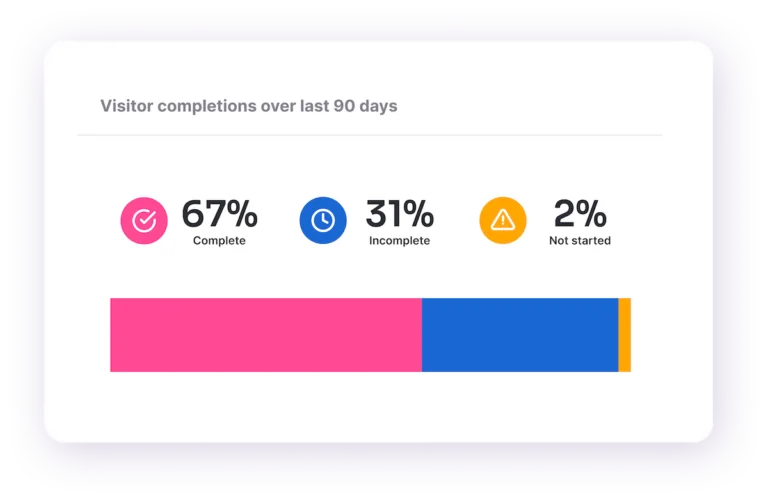
- For workflows with high and fast process adoption: If employees are completing workflows and processes quickly—and in the intended ways—the most important thing operations teams can do is leave them alone. These are superusers, and you can use them as an example to help everyone else achieve the same outcomes. Harness analytics to better understand what sets these users apart, and let those insights inform process tweaks and in-app support related to common workflows. What’s more, leaving these users alone allows ops teams to better scale their work, removing unnecessary tasks and maintenance from their plate.
Wie das Messen von Prozessen zu besseren Geschäftsergebnissen führt
A leading home improvement retail business wanted to help its employees drive more revenue in its B2B wing, selling supplies to independent workers and contractors. To further this goal, the company launched a lead generation process within its homegrown customer relationship management (CRM) software that helped employees find professionals with upcoming jobs and projects. It launched a trial in which it used Pendo In-app Guides to drive adoption of this lead generation process at 100 stores. The company found that stores using in-app guides had adoption rates 2.5x higher than those that only used traditional means of driving awareness (e.g. email). It also found that the test group of stores increased monthly revenue by an average of $1.5 million more than the control group.
3. Anwendungsakzeptanz
Die Anwendungsakzeptanz ist eine Kennzahl, die misst, wie viele Benutzer eine bestimmte Anwendung oder ein Tool nutzen. Sie wird oft im Laufe der Zeit anhand der Anzahl der monatlich aktiven Benutzer (Monthly Active Users, MAU), der wöchentlich aktiven Benutzer (Weekly Active Users, WAU) oder der täglich aktiven Benutzer (Daily Active Users, DAU) angegeben. Indem sie den Umfang und die Qualität der Nutzung einer bestimmten App verstehen, können die Technologie-Teams erkennen, ob das Unternehmen einen guten Return on Investment (ROI) für die App erzielt.
Businesses often only begin tracking and addressing application adoption once a digital transformation is well underway, but this is a mistake. According to McKinsey findings, the most successful CEOs “are as passionate about adoption as they are about strategy. They invest time up front in making sure that the people actually using the solutions…have a clear voice in the development process.”
Es ist wichtig zu beachten, dass das Ziel der Anwendung die gewünschte Akzeptanzrate beeinflussen sollte: Dient sie einem geschäftskritischen Zweck? Können sich Mitarbeitende dafür entscheiden? Oder erfordert sie nur eine saisonale Interaktion – zum Beispiel die Aktualisierung Ihrer Personaldaten zu einem bestimmten Zeitpunkt im Jahr?
How to take action on application adoption data
- Wenn Sie eine geringe Akzeptanz eines digitalen Tools oder einer App feststellen, können Sie die Analysen einer Lösung für die digitale Akzeptanz auf ähnliche Weise nutzen wie die für die Prozessadoption. Gibt es eine bestimmte Gruppe von Benutzern, die Schwierigkeiten mit der Nutzung der App haben, oder ist die Akzeptanz im gesamten Unternehmen gering? Wissen die Mitarbeiter überhaupt, dass sie die App nutzen sollen? Berücksichtigen Sie auch den Kontext: Wird die App für eine seltene, nicht wiederkehrende Aufgabe oder einen Prozess verwendet? Wenn ja, muss eine geringe Akezeptanz nicht unbedingt ein Problem sein. Je nach den Antworten auf diese Fragen können Sie Maßnahmen ergreifen, um die Akzeptanz durch In-App-Warnungen und Anleitungen zu erhöhen, oder Feedback einholen, um ein besseres Verständnis dafür zu bekommen, wie Sie Ihre Mitarbeiter am besten mit der App unterstützen können.
4. Support deflection
Reducing the amount of time spent manually providing support to employees is always an important goal. The most forward-thinking teams are leveraging digital adoption solutions to provide always-on automated support and guidance to help get their teams unstuck, and up and running faster. Teams can measure support deflection by taking a baseline measurement of the amount of ticket requests it gets related to given apps, tools, or processes, and then comparing that number to the amount it gets after a given period of time following the deployment of in-app support resources. These solutions can take the form of an application help center or resource hub, which houses support and guidance around various processes and functionality. Support can also come in the form of training deployed within the app itself to individuals or teams around a given task.
So ergreifen Sie Maßnahmen bezüglich der Support-Ablenkungsdaten
- Wenn Sie ein geringes Maß an Support-Umleitung feststellen, dann bewerten Sie die von Ihnen vorgenommenen In-App-Eingriffe neu. Enthält das Ressourcencenter Support, der für die anfragenden Personen oder Teams auch passt? Könnte eine bestimmte In-App-Schulung oder Anleitung klarer gestaltet werden? Richtet sich der Support an die richtigen Nutzer? Wird zu viel Unterstützung angeboten, sodass die Mitarbeiter aussteigen, weil sie das Gesuchte nicht finden können?
Wie eine erfolgreiche Ablenkung des Supports in der Praxis aussieht
- When a top financial services enterprise wanted to lower the amount of support requests it was receiving from employees, it turned to Pendo on over 40 internal-facing applications to drive real results. Rather than wait passively for queries to come in, this company got ahead of things by leveraging the Pendo Resource Center to create sources of truth within apps around key processes, workflows, and best practices. It also utilized in-app guides to deflect “walk me through a process” and “educate me about X” type requests. The result was a staggering 60% decrease in support request volume, coupled with a 14x increase in Resource Center views. This led to greater productivity among branch employees, who were able to quickly self-serve and get back to customer interactions instead of waiting on the home office support center.
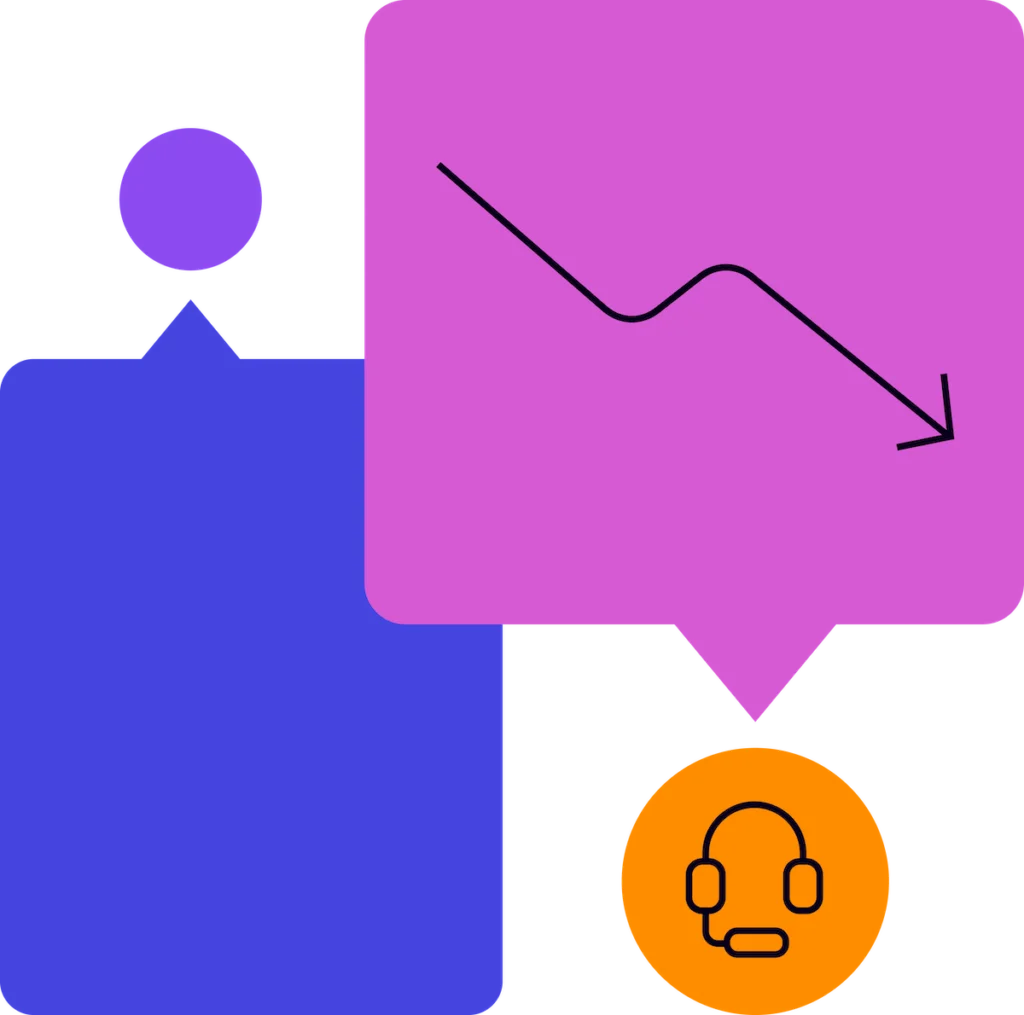
KPIs to measure and improve employee experiences
5. Employee satisfaction
At the company and department level, a lot of work goes into understanding the overall employee experience. In order to improve it, teams need to baseline and measure employee satisfaction. Although the precise means by which they do so varies by organization, employee satisfaction is generally taken as holistic, digital-workplace level (or tech-stack level) feedback to assess what people experience and feel about workplace technology and ways of getting work done. Sometimes this comes in the form of an annual employee survey, which gives IT teams insights into the state of employee morale. As the workplace has become increasingly more digital, an employee’s experience with software more and more determines their experience in the workplace as a whole, so it’s important for IT to regularly evaluate this kind of feedback.
How to take action on employee satisfaction
- Give team members the means to explain their survey responses and satisfaction level. Often, that comes in the form of text boxes in which they can elaborate on or provide commentary about why they feel a given way. It may be that dissatisfaction centers on a specific app or workflow (more on that below). Or it may be that teams feel a lack of general support around technology, or are having difficulty getting the answers they need. Whatever the issue may be, IT teams should identify the specific causes of general dissatisfaction in order to remedy the situation.
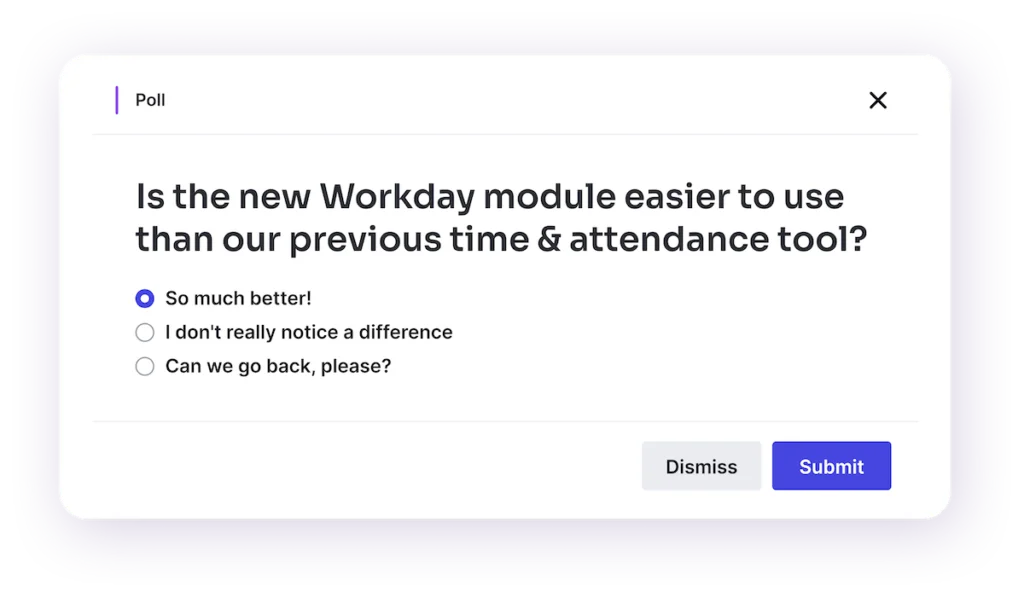
6. Segmented application Net Promoter Score (NPS)
Der Net Promoter Score (NPS) ist eines der gebräuchlichsten Mittel, mit dem Unternehmen die Zufriedenheit und Loyalität ihrer Kunden messen. Es handelt sich um eine Umfrage mit nur einer Frage: „Wie wahrscheinlich ist es, dass Sie diese Marke Freunden oder Kollegen empfehlen würden?“ Die Kunden beantworten die Umfrage auf einer Skala von 0 bis 10. Kunden mit 9 oder 10 Punkten gelten als „Befürworter“, mit 7 oder 8 Punkten als „Passiv“ und mit 0 bis 6 Punkten als „Kritiker“. Die Unternehmen ziehen dann den Prozentsatz der Kritiker vom Prozentsatz der Befürworter ab, um ihren Net Promoter Score zu ermitteln.
Application Net Promoter Score works the same way as NPS, but it is delivered to employees for a workplace app or software (“How likely is it that you would recommend this product or application to a friend or colleague?”). With segmented NPS, business systems teams consider the frequency with which individuals or teams use an application when evaluating their scores. For NPS scores pertaining to a Customer Relationship Management (CRM) tool, for example, sales teams who use the app with the most regularity and frequency would have their scores scrutinized most closely or weighted more heavily.
So ergreifen Sie Maßnahmen für segmentierte NPS-Daten aus Anwendungen
- Examine NPS scores by frequency segmentation. For example, if you’re trying to drive up adoption, you may want to look at infrequent users’ scores to better understand what might be holding them back from greater engagement. High-frequency users’ scores can be examined to best understand the impact the tool in question has on productivity and general morale. If scores are especially low, follow up with high-frequency users to better understand what’s driving their low rates of satisfaction. Is the tool not well-suited to the purpose for which teams are supposed to be using it? Is there confusion around the use of the tool or a feature within in a given workflow or process? Knowing the answers to these and other questions can help IT teams plan interventions designed to raise scores over time.
Sollte ich alle Kennzahlen segmentieren?
Wenn es um den Anwendungs-NPS geht, ist die Segmentierung ein Muss, um einen echten Wert aus der Kennzahl zu ziehen. Schließlich werden die Mitarbeiter, die eine App am häufigsten und am wichtigsten nutzen, ein breiteres und tieferes Feedback geben. Durch die Segmentierung können aber auch andere Metriken je nach Kontext an Aussagekraft gewinnen. Wenn es zum Beispiel um die Einführung von Anwendungen oder Funktionen geht, kann eine Segmentierung nach Rolle oder Team ebenfalls nützlich sein. Denken Sie an eine Funktion, die einer CRM-Anwendung für den Vertrieb hinzugefügt wurde, die sich insbesondere an Unternehmensteams richtet. In diesem Fall ist es sinnvoll, die Akzeptanz nach Märkten zu segmentieren (wobei die Akzeptanz durch die Teammitglieder im Unternehmen schwerer wiegt), um den Zustand der Akzeptanzraten zu beurteilen.

7. Employee feedback
Businesses collect employee feedback in many forms, for many elements of the digital workplace. Companies can track everything from top feature and enhancement requests, to business process improvement recommendations, to crowd-sourced best practices for a given app or workflow.
No matter what kind of “voice of the employee” program a company has in place, the level of proactive employee engagement with these programs is a good indicator of how invested they are in improving the employee experience. And business technology teams can learn a lot from that information. What features of the digital workplace do employees care about the most? Which apps and workflows have the greatest impact on their experience, either positively or negatively? The contextual insights you get from tracking feedback helps teams answer these and other similarly important questions.
How to take action on employee feedback
- Knowing which feedback channels and which products or workflows they relate to get the most proactive engagement helps IT or operations teams inform decisions about what to prioritize in their roadmap. If they see an unusually high level of engagement in feedback around improving a particular business process, for example, it indicates that the process owner should probably focus on optimizing that process ASAP.
KPIs for optimizing software tools
8. Return on investment (ROI)
IT should always measure the success of an application or digital project by the value it provides to the business. In turn, those funding IT should understand that value and determine an appropriate return on investment based on it. For any piece of software to generate a good return on investment (ROI), it should make or save an organization more money than the spend they put into it or otherwise mitigate risk in some meaningful way. There are a number of factors you can measure that contribute to a standard measure of ROI across SaaS tools.
One critical component of determining the ROI of software is time to value, or the amount of time from when an employee starts using an app to when the business begins deriving value from it. Another is license utilization rate, or the percentage of licenses a company has purchased for a given piece of software that is actually being utilized. A third is risk mitigation, or how well an app eliminates or reduces various risks (around security or compliance, for example) in a significant way.
So ergreifen Sie Maßnahmen aufgrund von ROI-Daten
- Für Benutzer, die eine langsamere Time-to-Value erleben, sollten Sie prüfen, ob sie die richtigen Onboarding- und Support-Erlebnisse erhalten. Wie haben Sie Ihre Onboarding-Strategie für Benutzer entwickelt und wie können Sie deren Onboarding-Prozess beschleunigen? Werden Veränderungen in einem Tempo eingeführt, das zu Ermüdung oder Verwirrung führt? Findet die Schulung persönlich statt, so dass Informationen und Tipps nach der Sitzung nur schwer zugänglich sind? Oder wird sie dann innerhalb der App bereitgestellt, wenn die Teams sie am dringendsten benötigen, und ist anschließend ständig im Ressourcenzentrum zugänglich?
- Bei Software mit geringen Lizenznutzungsraten können Sie mithilfe von Analysen feststellen, welche Benutzer die Software nicht nutzen, und feststellen, welche Muster sich ergeben.Arbeiten sie in der gleichen Abteilung oder Position? Bezahlt das Unternehmen bereits für Software, die denselben Zweck erfüllt?Je nach den Antworten auf diese Fragen kann die IT-Abteilung möglicherweise die Anzahl der Lizenzen, für die sie bezahlt, reduzieren, so dass Budget frei wird und der ROI für diese Software steigt.
9. Gesamtbetriebskosten (TCO)
Every piece of software comes with costs, but it can be challenging for IT teams and business leaders to discern precisely what those costs are and what they amount to because so many of them are indirect in nature. Total cost of ownership (TCO) is a metric that takes into account the entirety of costs, both direct and indirect, around a given piece of software. That means license costs, support costs, engineering and onboarding costs, maintenance costs—everything necessary for deploying the software, keeping it up and running, and prioritizing the right updates and fixes for employees. Once teams establish TCO baselines around software, they can identify opportunities for improvement.
So können Sie die Gesamtbetriebskosten senken
- Bei Software mit hohen Gesamtbetriebskosten können IT-Teams die Kosten aufschlüsseln, um herauszufinden, was genau die Ausgaben für die App verursacht, und dann Maßnahmen ergreifen, um sie zu senken. Es kann sein, dass eine bestimmte Anwendung niedrige Kosten für die Lizenzverlängerung, aber hohe Kosten für die Wartung und Aktualisierung verursacht (manche Anwendungen erfordern sogar zusätzliche Tools, um ordnungsgemäß aktualisiert zu werden). Wenn Sie wissen, welches Element die Kosten in die Höhe treibt, können IT-Teams die richtige Strategie zur Kostensenkung entwickeln.
So senkte ein führendes Immobilienunternehmen die Gesamtbetriebskosten für eine wichtige Arbeitsplatz-App
JLL, one of the oldest, largest, and most storied commercial real estate firms in the world, is pushing innovation in property technology forward via its JLL Technologies arm. One key JLLT app is Blackbird, a geospatial visualization platform built to showcase market knowledge to clients—and do so in a visually compelling way that leaves them wowed. The JLLT team wanted to ensure brokers were both aware of and able to gain value from new product features without placing too heavy a burden on engineering. It turned to Pendo’s In-app Guides to support and familiarize users with new features—and immediately began seeing a reduction in task time. What used to take an engineer three days as a manual build could now be handled by a product manager in an hour, dramatically lowering the resources required to maintain the app.

10. Portfolioausbreitung
Perhaps no problem has plagued IT departments more since the pandemic than SaaS sprawl—the proliferation of apps (and the costs associated with them) in companies’ internal app suites. It’s imperative for companies to have the right-sized digital portfolio for their needs, and measuring portfolio sprawl helps IT teams gauge how far off they are from where they need to be. They may choose to measure sprawl several ways—in terms of the number of internal-facing apps overall or the number of apps per user, for example.

So ergreift man Maßnahmen gegen Portfolio-Ausuferung
- After taking an accurate and comprehensive inventory of what’s in their portfolio, IT teams and business systems leaders can move toward adjusting their portfolio size to fit their needs. One way to do so is by leveraging digital adoption solution analytics to examine the usage of each app and decide whether it merits more investment, can be held as-is, or should be retired. Many companies, for example, unnecessarily pay for duplicative apps—apps that serve the same purpose or provide equivalent functionality as others already in the portfolio—when they could (and should) actually retire them.
A mature digital workplace means better business outcomes
Measuring the KPIs shared in this guide helps IT and operations teams design a digital workplace with intention and improve what’s on offer. When a company moves from a makeshift and chaotic digital workplace to building one composed of workflows, apps, processes, and elements that work in concert with one another, employees and the business as a whole benefit greatly. Gone are the days of having to perpetually triage one element or another just to keep things moving.

When you have a mature digital workplace, operational costs go down, business effectiveness goes up, and you’ll gleanbetter outcomes for company and employee alike. And there’s no time like the present to start improving things. Are you ready to build a digital workplace that works for you?
